Digitalization
- Home
- Digitalization
DIGITALIZATION
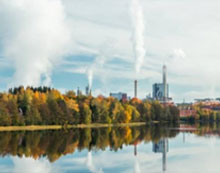
Bio refining chemical industry in Finland
_____________
DIGITALIZATION BASED OPERATIONAL EXCELLENCE
_____________
DIGITALIZATION OF CHEMICAL INDUSTRY AND OTHER
_____________
Chemical Industry
→
_____________
OPERATIONAL
EXCELLENCE OF CHEMICAL INDUSTRY
Digitalization of Chemical Industry to achieve Operational Excellence
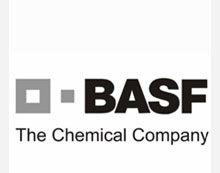
With increasing market competitiveness, leading Indian chemical and fertiliser companies are pushing for digital transformation, driving a mindset change from ‘good to have’ to a ‘must have’. After all, upgrading to state-of-the-art technologies doesn’t just enhance productivity, in units; it also ensures energy efficiency, reliability, and safety for operational excellence.
Automation and workforce effectiveness
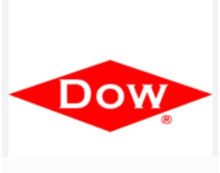
With the disruption of technology in the chemical and fertilizer industry, the workforce can ensure greater efficiency across business functions, vendors, and customers to deliver superior performance. Over the last decade, automation has been a prominent theme, pushing companies in this space to make technological changes from time to time.
For the process industry, it was all about implementing distributed control systems and incorporating programmable logic controllers for the peripheral islands of automation. The best-in-class equipment is largely being installed to increase human productivity and at the same time, enhance machine efficiency. With hardware design remaining almost a constant across continuous and manufacturing automation, software implementation got associated with industry domain knowledge.
Digitalization may have several positives, but it serves as a catalyst for most companies to help create an agile and sustainable environment. Not only does it take care of operational efficiency across the value chain, it also brings to the fore various stakeholders. With this step, a company is much closer to building a well-networked and connected organisation.
DIGITAL DISRUPTION | DISTRIBUTED CONTROL SYSTEMS |
MANUFACTURING AUTOMATION | GREATER EFFICIENCY |
AGILE OPERATIONS | SUSTAINABLE ENVIRONMENT |
Digital transformation to drive change
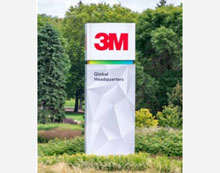
At a time when digital transformation was still new, chemical and fertilizer industries focused their energies on developing a strong foundation. This meant building a robust transactional support system to an ERP platform across all business units, enabling seamless and integrated flow of business processes and transactions.
Several companies also went ahead and implemented SAP S4/HANA, which is a ready-to-run cloud ERP that delivers the latest industry best practices and is big on innovation. With this move, it was much simpler to integrate all the core businesses in the organisation, eliminating silos in a large way.
Incorporating industry best practices is the best way to bring about any change. It also helps to create a single source of truth for every business with seamless information flow. One of the most effective interventions adopted by several companies has been the creation of dashboards that serve as a window to access critical business metrics. This is a sure shot strategy to ensure efficiency and drive success.
Most of us are already aware of how supply change is a critical piece of the puzzle to business success. It also became a constant subject of discussion during the pandemic. During this time, realisation dawned upon the industry that there is no bigger capability than planning to ensure critical organizational readiness to fulfil market needs.
We have witnessed several global crises that have imparted one critical lesson – that volatility at both demand and supply sides warrants improved decision-making. In manufacturing facilities that have complex supply chains and cater to different business units, product segments, and geographies, there is immense potential to leverage digital technologies to address the biggest of challenges. This step can also help create a more agile and resilient supply chain.
The use of Integrated Business Planning (IBP) solutions can fast-track the digitalization of the end-to-end supply chain planning process, covering sales planning, production planning, procurement planning and logistics planning.
→
By bringing different functions in supply chain planning onto a single integrated platform, chemical and fertilizer companies can attempt to have better collaboration with their stakeholders and other decision-makers.
→
Such moves can also help with optimisation of working capital, capacity utilisation, and reducing costs.
→
Visibility,
Control, and Correction
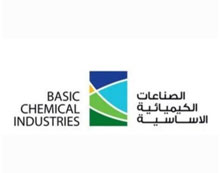
For most companies, the next obvious move is to plan and execute solutions that shall be integrated to enable seamless visibility, control and course correct capabilities. These steps can also have better and positive outcomes, including enhanced decision support and most importantly an improved customer orientation.
By connecting the supply chain and financial plan, it becomes a little smoother to deliver targets and at the same time, ensure timely root cause analysis of the deviations, thereby helping companies take corrective actions.
This conversation is incomplete without the mention of transaction systems that are critical to meet customer needs in time. It is also important to consider efficient logistics execution, keeping in mind volume growth, geographical expansion, space constraints, while considering customers’ demands as a priority. In this scenario, the measure of success is to maintain dispatch targets on a day-to-day basis, ensuring the delivery of products to customers at their destinations without any delay.
For any chemical and fertilizer unit, manufacturing operations feature at the top of the list. That’s why their focus revolves around enabling improved safety, reliability, productivity, and control in the last two to three years. The good news is that there are several new-age technologies that can speed up these tasks through automation, creating a digital operational infrastructure (DOI).
Older plants need to be transformed to keep up with their newer counterparts to maintain productivity, and thus profitability. Companies aiming for top-quartile performance are searching for answers to put together a digital transformation roadmap that will take them from their current stage of plant automation to DOI and autonomous systems.
Capacity Utilisation
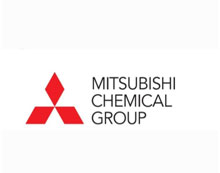
Digitalization has a huge potential to not just increase efficiencies, but also offer capacity utilisation and reduce costs. The journey has already begun and it’s only time until things fast track. The Industry 4.0 roadmap is exciting and brings in sustainability as a key objective.
When it comes to enterprise class systems, progressively organisations are taking future ready steps. At the same time, there are organisation-specific needs that cannot be addressed through a standard enterprise system. There is a need for digital enablement of processes or automation through collaboration. With investment into Low Code – No Code platforms, information technology functions in chemical and fertilizer companies can become more agile, in turn speeding up the digitalization journey of the organisation.
Today, the industry is increasingly embracing new-age technologies like Artificial Intelligence (AI) and Machine Learning (ML) to address non-linear challenges across a range of functions like manufacturing, sales, consumer insight, procurement planning, etc.
With the adoption of digital technologies in a big way, chemical and fertiliser companies are engaging better with their customers, understanding their needs and offering them relevant information on their product and solution offerings.
BASF SE | SAUDI BASIC |
DOW INC | 3M |
MITSUBISHI CHEMICAL | LINDE |
_____________________________
Our consulting on digitalisation is managed by a dedicated team from Finland.

In the chemical industry, digitalization is a sought after affair to check the negative aspect of environmental concern. Help from a country like Finland is significant. Finland can develop any industry so far as digitalization is concerned. Its education is based on innovation.
Finland’s digital skills level is well above the EU average: 79% of the population have basic skills, compared to the EU average of 54%. Microsoft’s Digital Futures Index measures the digitalization level of 16 European countries, including Finland.
The Digital Finland Framework aims to ensure the world’s best innovation and business environment for companies seeking to develop innovative products, services and solutions to challenges ranging from those in everyday life to meeting the Sustainable Development Goals.
Finland’s technology innovation is noteworthy. In the 40s, Finns built the first functioning flight recorder, which is later deemed as the black box. In the 70s, they invented the heart-rate monitor. And just a few years ago, Finland was the first country to deploy a 5G network. Today, the country continues to support bold concepts and ideas.
Finland’s largest trading partners (imports and exports of goods) in 2022 were Germany, Sweden, China, and the United States. Finland’s key export sectors are transportation, electronics, forestry, machinery, and chemicals.
If you think of taking your industry’s future to digitalization with a solid foundation, you should take the help of MCGR Finns team. |

TECHNOLOGY INNOVATION |
5G INDUSTRY |
MACHINERY INDUSTRY |
FORESTRY INDUSTRY |
ELECTRONICS INDUSTRY |
TRANSPORTATION INDUSTRY |
CHEMICAL INDUSTRY |
_____________________________
HIGH BUSINESS GROWTH
____________
TOURISM INDUSTRY
____________
Enabling High Business Growth in Global Tourism Industry
Alignment of National Vision
In Greece, tourism has a direct impact on the national economy and hotels are its most prominent industry.
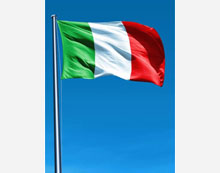
Tourism policies and programmes of Italy are based on key drivers such as technological and organisational innovation, skills development, and quality services. These aspects are integrated with a lasting and sustainable approach to Italy’s environmental and cultural heritage.
Quality Infrastructure
The question that needs to be addressed by the industry is, which strategies for quality improvement are the most effective for tourism to maximise customer satisfaction, as well as its profits, during the economic crisis?
High Level of Safety and Security
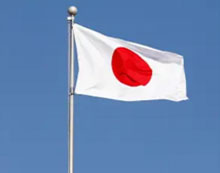
In June 2023, the number of foreign visitors entering Japan amounted to roughly 2.07 million people. This was the highest figure since the onset of the COVID-19 pandemic, surpassing the two million landmark for the first time.
People in Japan are famous for being incredibly polite, friendly, and welcoming. If you ask for directions despite the language barrier, they will always help you and tell you what you need. Everyone is very respectful and extremely helpful.
In short, Japan is very safe and the crime rate is quite low.
Demand Drivers

France is the most visited country in the world with 117,109,000 international tourists, thanks to its rich history and iconic landmarks. Mexico comes in second for most visited countries, with 51,128,000 tourists, offering vibrant culture and stunning natural beauty.
France’s scenery is as diverse as it is beautiful, with the glittering coastlines of the French Riviera, the patchwork fields of the Loire Valley, the snow-capped Alps and centuries old harbour towns of Normandy. Sustainability
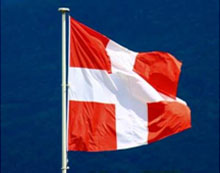
Tourists are drawn to Switzerland’s diverse landscape as well as the available activities, which take advantage of the Alpine climate and landscapes, in particular skiing and mountaineering. Switzerland is notable for its landscapes and tourism facilities (Matterhorn from the Gornergrat Railway Lake Geneva.
Application of TQM in Tourism
Reducing costly mistakes
→
Enhancing customer experience
→
Increasing agility
→
Boosting productivity
→
Hygiene rating
→
FRANCE | JAPAN |
ITALY | MEXICO |
SWITZERLAND | SPAIN |
_____________________________
How governments can develop the business growth of their tourism industry
Whether it is the national government or state governments there are many ways to develop their business growth in tourism.
Infrastructure developments
Tourism infrastructure development plays a vital role in the growth and sustainability of the tourism industry in any destination. It involves the creation, improvement, and maintenance of physical, social, and organizational structures and facilities that support and enhance the visitor experience.
Developing tourism infrastructure, such as airports, roads, hotels, restaurants, and attractions, stimulates economic growth by attracting visitors, generating employment opportunities, and fostering investment in the tourism sector.
Developing tourism hub
By promoting local attractions, investing in infrastructure, and training locals in hospitality, the tourism industry can create jobs. The tourism hub being the local development of tourist facilities like accommodation, local transportation and other necessary tourism infrastructure mainly deals with the supply side of the tourism phenomenon.
In India, to promote tourism, the Tripura government has decided to develop a “weekend tourist” hub around Ujjayanta Palace. The Ujjayanta Palace which was built at the heart of the city in 1862 by the erstwhile prince Chandra Manikya houses the state museum since 2013 and is the main attraction of tourists visiting the state.
Alignment with local capacity
Tourism development allows local people to adapt to new environmental, social, and economic conditions and helps prevent the negative consequences of rapid, uncontrolled development. Involving the local community in decision-making helps avoid conflicts that could threaten the sustainability of tourism.
Lessons from other nations/states
Thailand has, in recent years, emerged as a successful tourism destination, providing valuable lessons for other countries, including India. It has experienced a significant increase in tourist arrivals, jumping from 30 million in 2015 to 40 million in 2019.
Thailand tourism also boasts thrilling nightlife and unique cultural experiences.
Operational excellence
The role of operations strategy is to provide a plan for the operations function so that it can make the best use of tourism resources. Operations strategy specifies the policies and plans for using the tourism industry’s resources to support its long-term competitive strategy.
_____________________________
What a government should do when its tourism sector in growth stage
Local government has the primary role of ensuring that the tourism environment encountered by both locals and visitors should be clean, safe, healthy, accessible and stimulating.
Improving the tourism industry’s performance can be done by providing infrastructure and improving facilities in tourism industry activities.
Highlight Main Attractions: Focus on unique aspects like UNESCO sites, natural landscapes, and cultural landmarks to attract tourists.
Target Visitor Identification: Recognize specific visitor demographics like age, interests, and travel preferences to tailor marketing strategies effectively.
_____________________________
How to make a region
medical tourism hub for business growth in India
Medical tourism is defined as travel primarily for the purpose of receiving health care. Medical tourists may travel for a variety of procedures, including novel or experimental treatments. Medical tourists may also travel to developing or developed countries.
One of the most significant advantages of medical tourism in India is its cost-effectiveness. The cost of medical treatments in India is significantly lower compared to developed countries, without compromising on quality.
Factors influencing medical tourism in India
Why is India developing in medical tourism? India’s healthcare industry offers a combination of both modern and traditional forms of medicine which sets the country apart from others. First, it has a set of world-class doctors and hospitals that provide treatment at fractional rates when compared to other countries.
In India, developing special tourism zones having world-class facilities and wellness offerings will provide a competitive edge. States should be encouraged to develop such special wellness tourism zones and the Central Government should provide necessary assistance for infrastructure development.
India has to develop a brand for India as a wellness destination, strengthen the ecosystem for medical and wellness tourism, and enable digitalization by setting up Online Medical Value Travel (MVT) Portal.
Hospitals must provide strategies that promote a stress-free experience for the patient to attract more international patronage. A hospital’s international medical department is the easiest way to reach target customers.
The major contributing factors behind the success of India in medical tourism may include less costly skilled labour force, latest medical technologies, standard quality medical services and facility of mass use of English
The medical tourism market is expected to generate US$ 221,252.6 million in 2023. Global medical tourism market revenue is expected to reach US$ 733,422.9 million by 2033. A CAGR of 12.7% is expected for the medical tourism market during the forecast period.
Approximately 2 million patients visit India each year from 78 countries for medical, wellness and IVF treatments, generating $6 billion for the industry which is expected to reach $13 billion by 2026 backed by the government’s Heal in India initiative.
Kerala is one of the most well-known states in India for ayurveda medicine because it offers visitors the natural, ayurvedic care that is so popular with foreign visitors. Kochi in Kerala attracts the maximum number of foreign customers in the state.
Bengaluru, Chandigarh Capital Region (CCR), Delhi NCR including Gurugram and Faridabad, Jaipur, Kerala, Kolkata, and Mumbai are Medical tourism hubs in India.
Role of government of India
How can the government of India encourage medical tourism in the country? Ministry of Ayush developed a central sector scheme namely Champion Service Sector Scheme for Medical Value Travel. Under this scheme, financial assistance in the form of interest subsidy is provided to private investors for the establishment of super specialty hospitals.
What are the initiatives taken by the government to boost medical tourism?
The Heal in India initiative is focused on positioning India as a global leader in health and to boost medical tourism in the country. The initiative involves a digital portal called Medical Value Travel, which will be a window of integrated Indian health care for the world.
With world-class medical infrastructure and skilled medical professionals, India has become a preferred destination for medical tourists from across the globe. India has emerged as a hub for medical tourism due to its low-cost treatments and state-of-the-art medical facilities.
The individual-related factors are broadly sorted as country selection, hospital selection and doctor availability.
Scope of medical tourism in India
What is the scope of medical tourism in India? India ranked 10th in the 2020-2021 Medical Tourism Index. And the arrival of foreign tourists for medical purposes has increased from 1.83 lakh in 2020 to 3.04 lakh in 2022. These findings indicate enormous opportunities for doctors to benefit from medical tourism.
NABH provides accreditation to Medical Value Travel Facilitator MVT Facilitators, a largely unregulated segment within the medical tourism sector.
India should open up exciting career opportunities in medical marketing services, public relations, international insurance, travel and tourism, logistics management and hospital administration.
Medical Tourism Marketing
How can you expand your medicals business? Plan and execute a good marketing strategy and consider sponsoring local medical events, such as schools’ medical days, to build brand awareness and add more clients to your roster. You can also hire an agency to take care of marketing activities for you while you focus on your business’ daily operations
What makes medical marketing unique? The industry focuses on creating experiences for the fans and building a strong emotional connection with them. Medical marketers need to incorporate several additional elements, such as sponsorship, activation, content marketing, influencer marketing, and event marketing, to make their campaigns more effective.
How do you market a medical facility?
Consider a mix of online and offline channels such as social media, email marketing, local advertising, and partnerships with local medical teams or fitness influencers. Use the automations feature to streamline your marketing efforts and automate tasks like social media scheduling or email campaigns. What is the future of medicals marketing? Virtual Reality (VR) and Augmented Reality (AR) are gaining traction in the medicals marketing industry.
What are the most effective ways to develop and implement a medical tourism strategy in your city or region?
You assess your assets, define your vision and objectives, develop your action plan, promote your destination, deliver your services, and
evaluate your performance.
Do you want to develop a medical tourism hub or its business growth? If interested, any government can talk to MCGR.
_____________________________